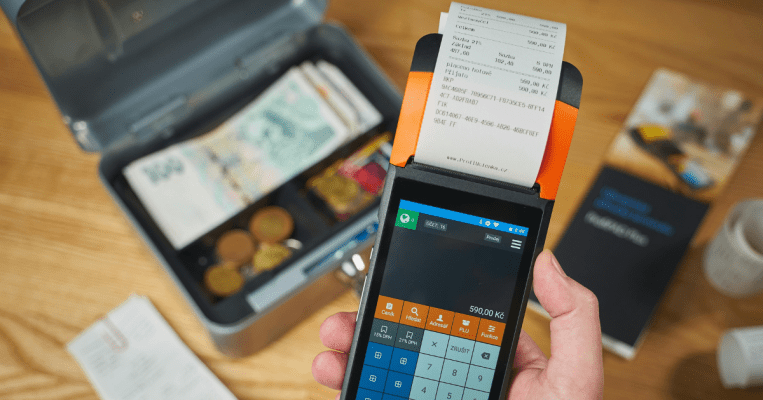In today’s fast-paced digital economy, payments happen in an instant — whether it’s buying groceries online, paying school fees, or transferring money for business purposes. But amid all this financial activity, one often overlooked yet vital component is the payment receipt. In India, where digital transactions are booming and cashless ecosystems are rapidly expanding, understanding the role and structure of a payment receipt is more important than ever.
This blog will break down what payment receipts are, why it matters, how it’s used, and the different types you might come across — especially in the context of Indian financial systems.
What is Payment Receipt?
A payment receipt is a document or digital proof issued after a payment is successfully made. It provides important information such the amount paid, the date of the transaction, mode of payment, reference number, payer and receiver data, so verifying the receipt of payment.
Whether it’s for personal reference, tax filing, or business bookkeeping, a payment receipt plays a vital role in maintaining financial transparency and accountability.
In India, a payment receipt can be generated for a variety of transactions — from UPI payments to utility bills, school fees, loan repayments, e-commerce purchases, and more.
Why Payment Receipts Matter in India
1. Legal Proof of Transaction
In India, payment receipts acts as valid proof in case of payment disputes. For instance, if a merchant claims they haven’t received payment, you can produce the transaction receipt to support your case.
2. Crucial for GST and Taxation
For businesses operating under the Goods and Services Tax (GST) regime, a receipt of payment is crucial for filing returns and claiming Input Tax Credit (ITC). It supports invoices and confirms that the payment was indeed processed.
3. Banking and Audit Compliance
Indian enterprises, particularly startups and MSMEs, must maintain proper books of accounts. A well-documented payment receipt ensures smooth audits and helps track financial inflows and outflows accurately.
4. Record-Keeping for Consumers
From college tuition to insurance premiums, Indian consumers often need to store payment receipts to claim refunds, verify services, or for future references.
Types of Payment Receipts Common in India
1. Digital Payment Receipts
With UPI, internet banking, wallets, and QR code payments dominating India’s payment landscape, digital receipts are the most common. These are auto-generated that usually include:
- Transaction ID
- Amount paid
- Date and time
- Payment mode (UPI, debit card, net banking)
- Receiver’s name
2. Cash Payment Receipts
While digital transactions are on the rise, cash payments are still prevalent, especially in semi-urban and rural areas. Businesses or service providers often issue handwritten or printed receipts acknowledging the payment received in cash.
3. Subscription or Recurring Payment Receipts
These are issued for recurring payments like OTT subscriptions, school fees, rent, EMIs, etc. Platforms like SabPaisa offer automatic generation of recurring payment receipts to make tracking easier for both payers and collectors.
4. Utility and Government Receipts
Payments made to government services — such as property tax, electricity bills, or challans — also generate receipts which are important for official verification and record-keeping.
Key Elements of a Payment Receipt
To be valid and useful, payment receipts in India should typically include:
- Name of the payer and payee
- Amount paid (in figures and words)
- Date of payment
- Unique transaction or reference ID
- Payment method (cash, card, UPI, NEFT, etc.)
- Description of what the payment was for
- Signature (in physical receipts) or digital confirmation
Some businesses also add branding, customer care contact details, and invoice numbers for better traceability.
The Rise of Automated Payment Receipts
Automation has transformed the way receipts are generated and delivered. Businesses using platforms like SabPaisa can send payment receipts instantly via email, SMS, or WhatsApp. This lowers running expenses and manual mistakes in addition to enhancing client experience.
Automated payment receipts are particularly helpful for:
- Educational institutions collecting tuition or hostel fees
- NBFCs and banks handling loan EMIs
- E-commerce firms acknowledging purchases
- Utility providers issuing bills
- Event management and ticketing platforms
Moreover, automation ensures that the receipt of payment is seamless, secure, and standardised, boosting customer trust.
Best Practices for Handling Payment Receipts
- Verify Details Before Confirming: Always double-check the payment amount, reference ID, and date on your payment receipt to ensure it matches your transaction.
- Store Them Securely: For tax purposes or refund requests, it’s wise to store your payment receipts, either physically or digitally, in a secure manner.
- Use Official Payment Channels: To avoid fraud, always use verified payment gateways and demand a transaction receipt after every payment.
- Integrate with Accounting Systems: Businesses can streamline operations by integrating their receipt systems with accounting tools like Tally or QuickBooks for real-time financial updates.
Conclusion
A payment receipt is more than just a formality — it’s a critical part of India’s financial ecosystem. From serving as legal proof to simplifying audits and tax filings, its importance cannot be overstated. As India moves further towards digital payments, businesses and individuals alike must ensure that payment receipts are generated, recorded, and stored properly.
With platforms like SabPaisa offering robust and automated receipt solutions, managing your payments and receipts has never been easier or more secure.
Frequently Asked Questions (FAQs)
1. What is a payment receipt?
A payment receipt is a digital or paper confirmation proving a successful payment made and received. It includes transaction details, amount paid, date, and parties involved.
2. Are payment receipts mandatory in India?
While not always legally mandatory, payment receipts are highly recommended as proof of transaction and for tax or audit purposes.
3. Can I use a digital payment receipt for tax filing in India?
Yes, digital payment receipts are accepted for tax purposes, especially if they are from recognised platforms and include GST details where applicable.
4. How do I get a receipt for a UPI payment?
Most UPI apps generate a transaction receipt automatically after a successful payment. You can access it from the transaction history in your app.
5. What happens if a payment receipt has errors?
If a payment receipt contains incorrect details, contact the payee or service provider immediately for a revised copy. Accurate receipts are crucial for dispute resolution and records.
Looking for a secure, multi-mode payment collection system with automatic payment receipts?
Explore SabPaisa – India’s trusted payment platform with UPI, cards, net banking, cash counters, and more – all backed by RBI-authorised reliability.


